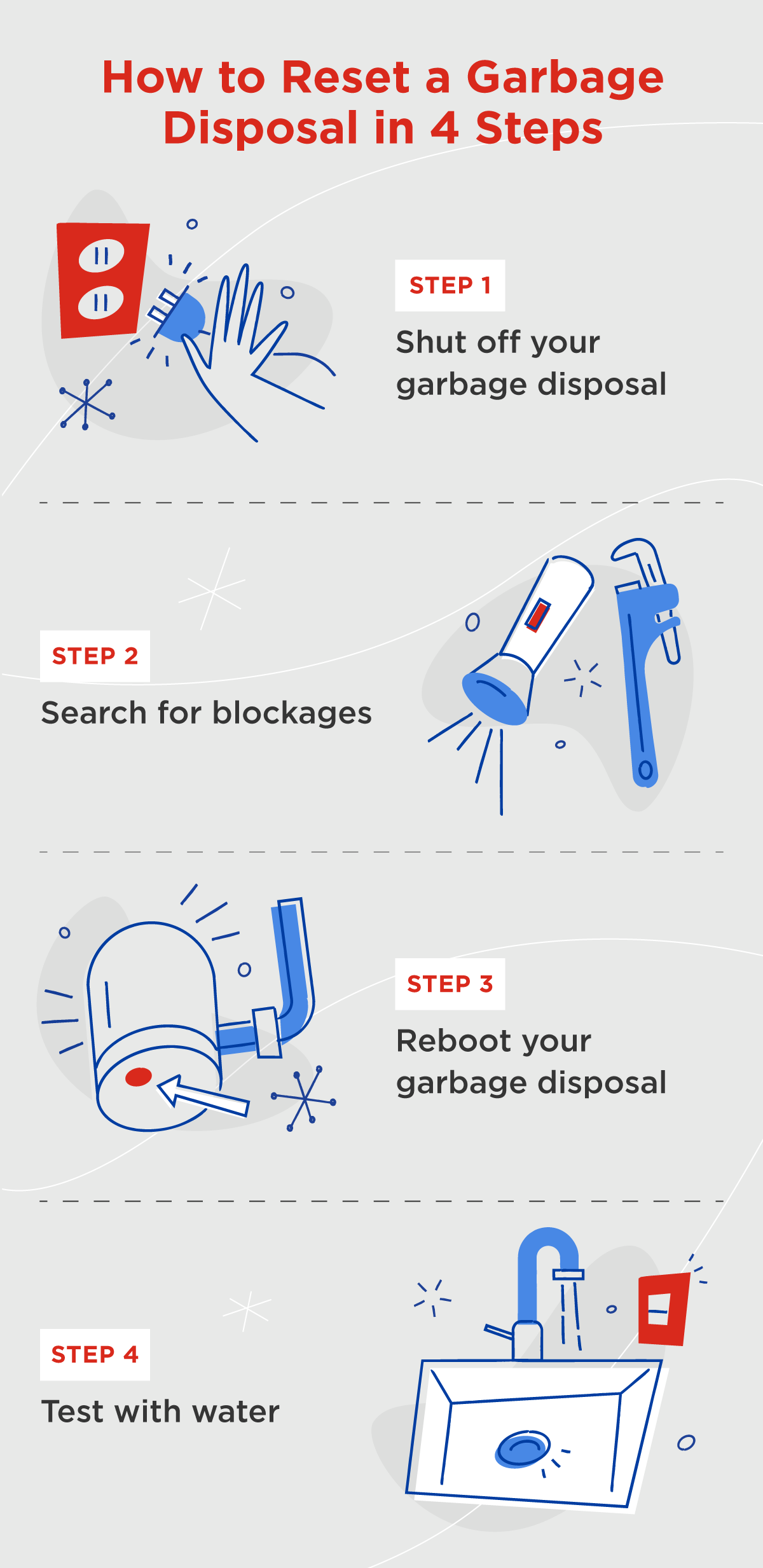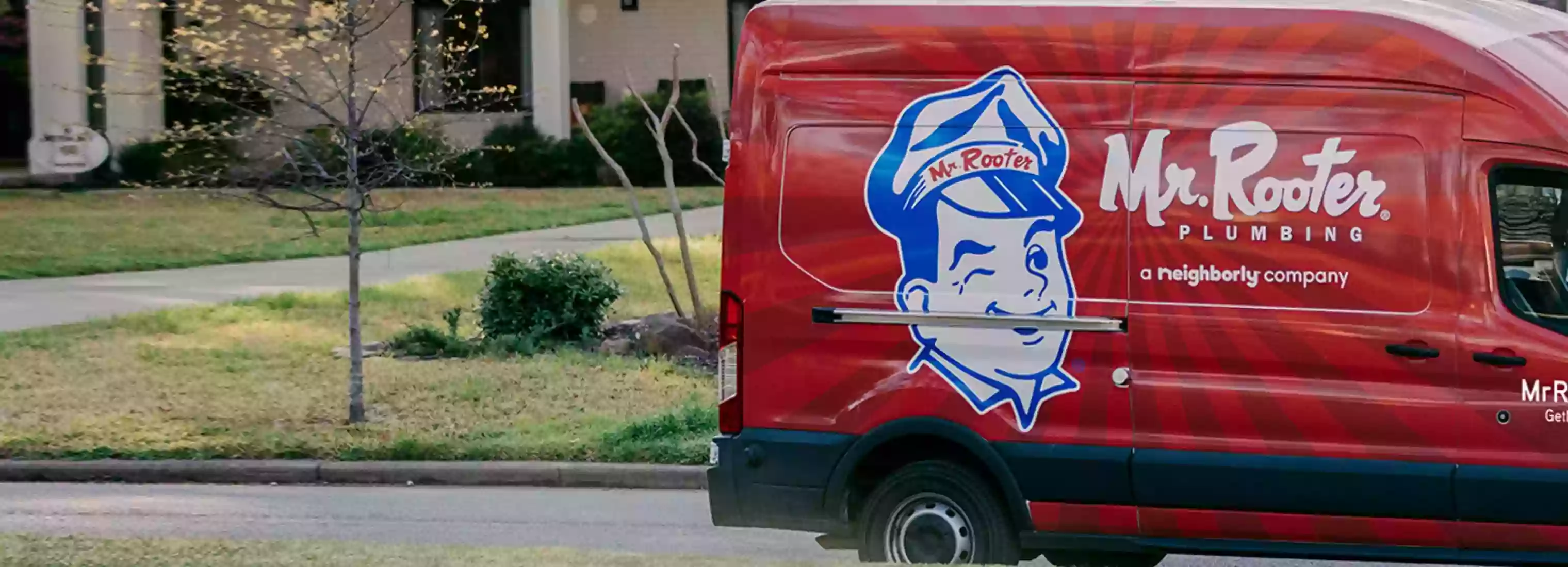How To Reset a Garbage Disposal for Smooth Operation
.webp)
It’s incredibly stressful to deal with a garbage disposal that stops working properly. A unit that’s clogged or emits strange sounds will need to be reset quickly.
Knowing how to reset your garbage disposal can prevent costly damage if the appliance malfunctions. Most disposals have a reset button on the bottom along with an Allen wrench lug to help unjam it.
This guide will explain how to reset a garbage disposal and how to unjam its grinding ring in a few simple steps. We’ll also explain how Mr. Rooter Plumbing® service professionals can provide garbage disposal repair services if the problem is too complex.
1. Turn Off the Garbage Disposal
You need to turn off your garbage disposal fully before performing any work on it. You can usually do this by unplugging the disposal from the wall it’s connected to, though you can also shut off the circuit breaker if your unit lacks a removable cord.
2. Check Your Disposal for Blockages
Once your garbage disposal is powered off, inspect your appliance for blockages. If there appears to be a jam, look at the bottom of your disposal unit. Some disposals have an accessible area on the bottom where you can use an Allen wrench to free a jam by spinning the grinding chamber.
An alternate method is to insert a broom handle into the kitchen sink to spin the grinding chamber until the jam clears. Be sure the switch is in the “off” position before attempting either of these methods.
3. Locate the Garbage Disposal Reset Button
Most garbage disposal units have a red or black “reset” button on the bottom of the appliance. If this button pops out, it can indicate that the appliance needs repairs.
Press the reset button. If this doesn’t work, check to see if a fuse is blown or the circuit breaker is tripped. If it has been tripped, reset the breaker.
4. Test the Garbage Disposal
Once you’ve reset your garbage disposal and cleaned it out as much as possible, test your unit while running cold water. If it’s properly fixed, the water should easily pass through without emitting any unusual sounds.
If your unit is still loud, overheating, or functioning abnormally, contact a service professional for assistance.

Tips To Prevent Garbage Disposal Jams
A malfunctioning garbage disposal is a major inconvenience. However, most issues are completely avoidable. Handle your disposal with care, and it will work well for you for years to come.
Here are some do’s and don’ts of what goes down the garbage disposal so you can get the longest lifespan possible from your appliance.
These items DO go down the disposal:
- Small biodegradable food items: This includes food scraps, such as pieces of fruit, veggies, bread, or meat. It’s important for these items to be small. Any larger pieces could clog your appliance and create a smelly garbage disposal.
- Cut-up pieces of larger food items: Ideally, throw them in one piece at a time to avoid clogging the disposal. Mr. Rooter Plumbing can help with clogged drain repair if you happen to forget this step.
- Cold running water: Running cold water from the faucet while the drain operates causes any residual oil or grease to solidify so the grinder can chop it up before it enters the trap of the disposal. Running cold water at least once a day can flush out any potentially disruptive materials. This also applies to occasionally grinding ice cubes.
- Dish soap: Squirting a little dish soap down the disposal, turning on the cold water, and letting it run for a minute is an easy way to clean the receptacle.
The following items DO NOT go down the disposal:
- Glass, metal, plastic, or paper products: If a glass breaks in the sink, do not try to grind up even the smallest shards. Hard materials like this could dull or damage the blades, and they could puncture your pipes and create leaks.
- Cigarette butts or anything combustible: You’ll want to clean your garbage disposal as quickly as possible, as cigarette butts can clog grinding plates, damage motors, or even contaminate your water supply.
- Large animal bones: Most animal bones are too hard for your disposal. Anything bigger than fish bones should be thrown in your trash can.
- Coffee grounds: While not a problem for the garbage disposal itself, the grounds may accumulate inside the pipe and lead to clogging.
- Large amounts of fat, oil, or grease: These can solidify and accumulate, potentially clogging your drain and causing waste to flow back up into the sink.
- Fibrous food items: Fibers from items like cornhusks, onion skins, artichokes, and celery stalks can get tangled in the blades and motor or clog the drain.
- Fish skins and eggshells: These hard substances can clog a garbage disposal if they get stuck to pipes or wedge between the grinding plate.
- Too many potato peels: While a small amount should be OK, too much produces starch that transforms into a thick, sticky paste that prevents the blades from working correctly.
- Expandable foods, including rice and pasta: When you add water, these items expand, which can lead to clogs in the disposal and pipes.
- Harsh drain cleaners and chemicals: Chemicals like mercury and formaldehyde can damage the disposal blades and pipes, prompting swift drain repair to fix the issue.

Let Mr. Rooter Plumbing Help With Your Garbage Disposal
Call your local Mr. Rooter Plumbing for garbage disposal repair, and trust our experienced service professionals to get the job done right.
Mr. Rooter Plumbing service professionals specialize in sink repair and are happy to answer your questions on proper garbage disposal maintenance. Call to schedule an appointment or request an estimate online today.
How To Reset a Garbage Disposal FAQ
Kitchen appliances can be tricky to fix. The following questions reflect some of the most common issues homeowners face with their garbage disposals.
How do I reset a garbage disposal that hums?
Follow the usual protocol to reset a humming garbage disposal. Turn off and unplug your appliance, check the sink for blockages, then press the reset button located at the bottom of your unit.
Wait about 10 to 15 minutes, then test your unit again by running cold water while it’s on. You should only hear the hum of your unit’s motor at this point.
How long do you have to wait after resetting a garbage disposal?
Generally, you should wait 10 to 15 minutes to ensure your motor has cooled off and won’t overheat. The reset button shouldn’t pop out again, which is a strong indicator that everything is working as intended.
Why will the red button on my garbage disposal not reset?
Overheating is likely the reason why your reset button isn’t working. If your disposal is too hot, the button will just pop back out after pressing it. Let your garbage disposal cool down for about 10 to 20 minutes before you try to reset it again.
How do I unjam a garbage disposal?
If your garbage disposal gets jammed, you can typically use an Allen wrench to manually rotate the impeller blades. Make sure your disposal is powered off first, then insert the wrench into the bottom of the appliance and rotate it side to side.
If you don’t have an Allen wrench or your appliance doesn’t have a slot, you can try unjamming the sink with a broomstick handle. Otherwise, it’s best to call a professional for assistance.
Why is my garbage disposal rattling but there is nothing in it?
Issues with your disposal’s motor or blades are the most likely causes of a rattling sound. If food or grease gets stuck under the blades, they can become misaligned and emit a loud grinding noise when you turn them on.
A failing motor can also affect your disposal's performance and noise level. You can’t replace this part alone in most cases, so you’ll have to contact a service professional to complete the job.
 Click to call
Click to call


